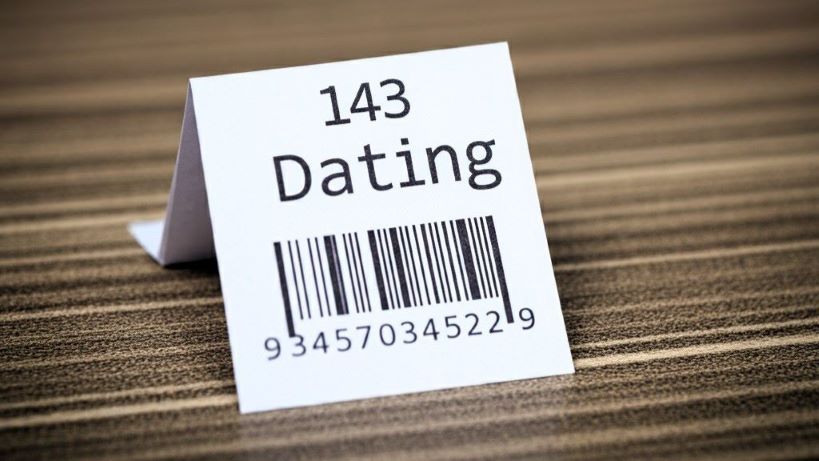143 decoding the secret love message in the modern dating world.Everyone is aware and uses digital communication. It has brought forward a new landscape and communication between individuals, particular in the dating app arena. Various forms of expressing one’s affection have been created - such as icons, photos, memes, abbreviations, and of course, numbers.
The 911 on the 143 love language.
Introduction
Many people call it the new “love language.” 143 is, of course, one of the many acronyms and emoticons now often used to refer to love. Many people recognize 143 as an abbreviation for the words ‘I love you’. Some people may not find it the most loving expression, but for quite a few people, hearing or seeing these three words evokes an emotional response. This essay talks about the origin of 143, how it impacts dating and its meaning in today’s day and age.
Quick Index
+ The Origins of 143
+ Where Did 143 Come From?
+ The Evolution of 143 in Digital Communication
+ 143 in the Social Media Age
+ Modern-Day Variations of 143
+ The Psychology Behind 143
+ The Commercialization of 143
+ Conclusion
+ Tools for the Reader
+ Takeaways
The Origins of 143
Where Did 143 Come From?
The 143 code is a representation that 1 stands for I, 4 stands for Love and 3 stands for You. It was made popular through pagers when people started sending affectionate messages. Even though it came to be during the pager generation, it is still used in the text and social media generation.

LightHouse Signals
143 has been made popular through pagers. Through pagers, users could send discrete messages to each other. Many still believe otherwise. Although the term came around during the days of pagers, it is still relevant in today’s texting and social media world. In 1894, the lighthouse in the Boston Harbor emitted a light that flashed one, four, three. According to the area residents, it was a message for, “I love you.” After that, the lighthouse gained the nickname called, “Lover’s Light”.
This shows how the power of numbers can easily become embedded in one’s consciousness and can also generate a lot of affection.
Evolution of the 143
Through the 1980s and 1990s, pagers were a major form of communication. The display restriction of their text messages led them to use code. Out of all these codes, 143 was seen as a secret code for love. As pagers fell out of use and cell phones became more popular, 143 had the right perception as it was easy to type.
143 Social Media
As emojis, GIFs and memes became a part of social media, many thought it would be the end of 143 but it still has many people who use it to express love. Why has it persisted? Some think of nostalgia while others believe it has cultural significance. In any case, 143 has a place in digital media. The youth and not-so-young nowadays use it on social media.

Variations of the 143
Is it a Subtle Expression?
143 means I love you. Though it means “I love you,” 143 is a less intense way of saying it. It is often used when dating and getting to know someone. It allows people to let their love for someone known with lesser value than saying it.
A Quick Digital Kiss
At times, you just don’t have the time to make a phone call or send a lengthy message. 143 is perfect to send when you have no time but still wish to communicate to your partner. It assures them you are still thinking of them!
Secret Code for Twosome
The code 143 refers to a saying used by couples as per the private codebook. When either in text messages or buried in social media posts, 143 may be a private form of affection that only the sender and receiver understand.
Psychology Bonding
When you can share something with a particular person that only you and that person will understand, it gives a feeling of exclusivity. It makes you feel connected emotionally to that person.
As a result, it’s been said that when you say ‘143’ to someone, it’s only between the two of you. This code lets one’s partner express their feelings without too much publicity. If you use 143, it gives a sense of privacy and belonging to couples.
Any Cultural References of the 143?
Fred Rogers, who is also referred to as Mr. Rogers, uses “143”. The essence was simple. It was the best way to say to those he respected (I love you). Fred Rogers kept his weight at 143 as he thought it stood for I Love You. This shows that 143 can mean many things and often has a more profound personal meaning than just romance.
Mr. Rogers 143 was also a reminder to him and you that it’s all about love (and not just body weight). Mr. Rogers' message of love and connection struck a chord with people, which 143 became a popular symbol.
Global Effect
We see that many cultures have their own ways to use numbers to express love. For example, in Thailand 459 means I love you. Also, we see longer iterations like 1437 (I Love You Forever) becoming popular, the numbers are evolving with time.
In China, you may see people using number codes for love. It has become quite popular to use number 520 as it means I Love You. We see that often in messages and also as part of celebrations. Thus, we see how 143 does not limit to a language.
143 and Music
We see 143 in music and pop culture. Other than personal communication, 143 has made its way into music and pop culture. We see many songs using the number 143 in the song or in the title to share love. Also, musicians across genres have used 143

Sports and the 143
In sports and entertainment, 143 is another interesting occurrence. Some athletes and actors have paid tribute to their loved ones by using the number, signifying it is more than romantic. We have seen 143 on jerseys and in 1 or 2 speeches and this is truly an important number.
Weird fact, 143 has been used in professional wrestling and extreme sports. Some competitors use 143 to show their sponsors, trainers, and coaches they love them. These high-level athletes participate in extreme sports or professional wrestling.
Commercialization of the once unknown 143
The impact of 143 goes down into marketing and branding from personal relationships and bonding. Many popular brands have used 143 in their ads as it is culturally appropriate and liked by people. This solidifies its role in contemporary society as a lasting symbol of love.
Luxury brands, greeting card sellers, and social media companies have used 143 in their campaigns, showing its growth in modern-day society as a great way of showing love. Whether it's limited-edition items or Valentine's Day promotions, companies use 143 to create emotional connections with their customers.

Conclusion
From a lighthouse in the 19th-century to the digital age, 143 has been a powerful love symbol. Whether used in a text message, post on social media, or in branding of a company, it is effective. No matter how we communicate these days, 143 shows that love can be expressed in just three digits at times.
Additional Tools for the Reader
+ Digital Love Codes: A reference of other numerical love codes worldwide.
+ Examples of 143 in Popular Culture: Music, Movie, and other Pop Culture.
+ 143 Emoji
Take Away
-
143 is a reference to the Morse code incident of a Lighthouse in the 1800s.
-
It evolved from pager-era messaging to modern social media.
-
It constantly signifies love in the digital age.
-
The significance further solidified with Mr. Rogers some would argue.
-
It was solidified in the fields of marketing, music, entertainment, and sports.
Keywords
I love you / love language / digital communication / text message abbreviations / pager era / social media love codes / Mr. Rogers
1. Written By: Anthony Rand. B.A., B.A., LL.M.
2. About the Author
Anthony Rand is a relationship expert with over 35 years of experience in the dating world. He has helped individuals navigate the complexities of modern relationships. He has authored numerous articles on topics ranging from online dating strategies to building lasting relationships. He holds degrees, including an LL.M. (Master of Laws) and two Bachelor of Arts degrees.
3. Disclaimer
Please remember, there is much variation and diversity in life. Within this variation come various expectations and differences. What may work in the article above may not work for others. While this article does provide great insight and strong fundamentals it cannot answer all the issues. It is limited in its scope, since every relationship is different. Follow your heart and mind to see what works best for you
Updated February 11, 2025

